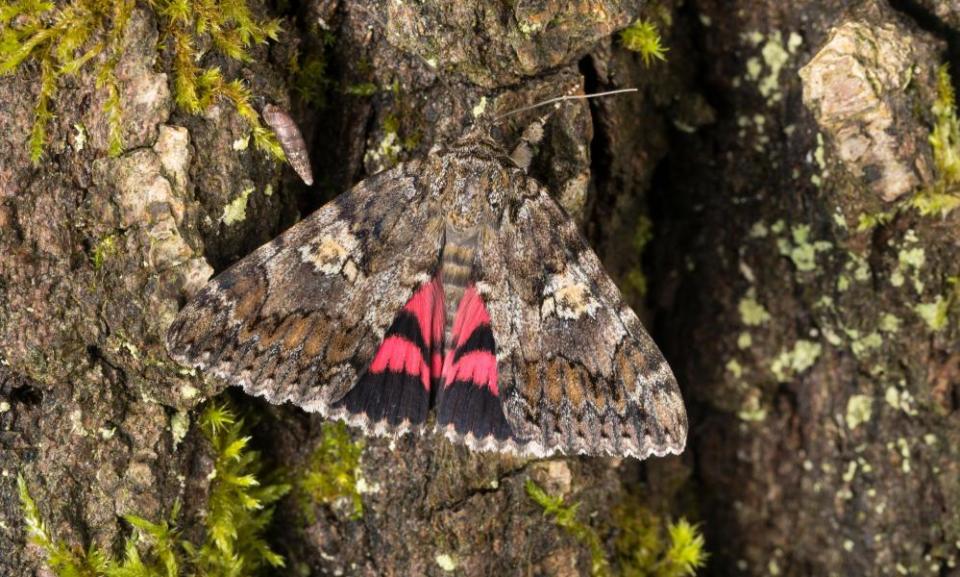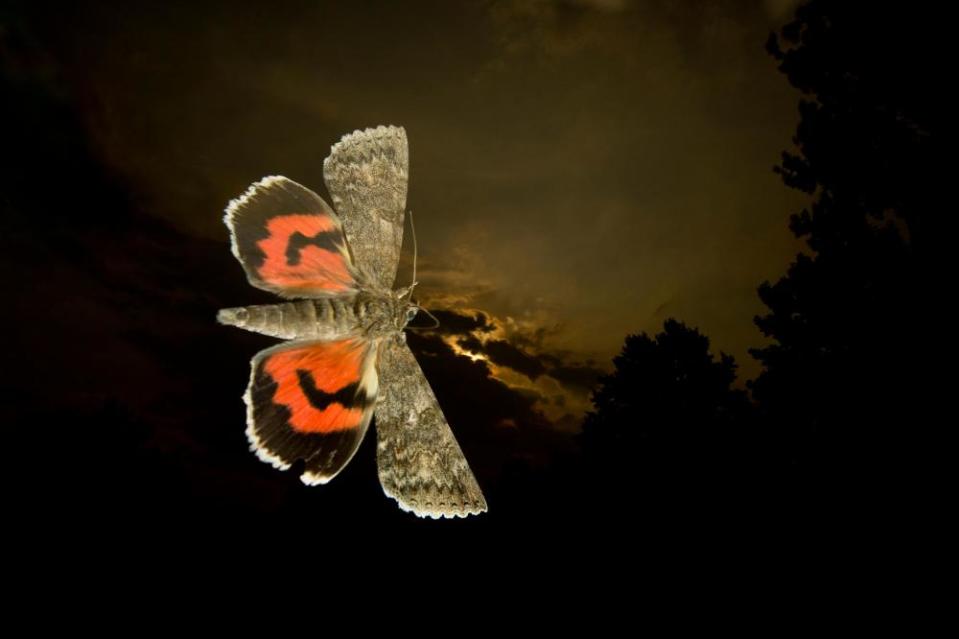Underwing and a prayer: Moth Night spotters hope for a flash of fuchsia

People are being invited to help track the spread of a moth that often hides its hindwings of dazzling fuchsia beneath a dowdy brown “overcoat”.
The dark crimson underwing has enjoyed an “amazing” August, according to experts, appearing in many new locations, including the first ever recorded sighting in Wales.
Its spread, along with that of other large “underwing” moths boasting bright colours beneath grey-brown forewings, will be recorded by thousands of enthusiasts during Moth Night, an annual three-night event on 27-29 August during which people are urged to go moth-spotting.
While many moth populations are in decline, climate change is dramatically boosting the abundance and distribution of several species of underwing.
The red underwing is one of Britain’s largest moths, with a wingspan of up to 9cm (3.5in). Until recent decades it was restricted to southern and central England, but is now spreading northwards and westwards and has been recorded in Scotland, Ireland and the Isle of Man.
The rarer dark crimson and light crimson underwings were once confined to the New Forest but are now flying over new sites in southern England. Rarer still is the rosy underwing, a recent colonist of the Channel Islands.
Mark Tunmore, the founder of Moth Night and editor of the journal Atropos, said: “Already we have been receiving widespread reports of dark and light crimson underwing moths in southern England, indicating that the range expansion of these species is continuing, induced by climate change.
“Particularly exciting has been a recent sighting of dark crimson underwing in Gwent, and just a few days ago we received a report of a rosy underwing in Dorset. So we can’t wait to see what happens with so much interest focused on these stunning species over the Moth Night event.”

Richard Fox, of Butterfly Conservation, which organises Moth Night with Atropos, Butterfly Conservation and the UK Centre for Ecology & Hydrology, said: “Moths are on the move in the UK, with many species in decline, but others, such as the red underwing, are increasing and spreading to new areas.
“We need people’s help to find out how far the red underwing has got: has it now colonised Scotland, for example? By taking part in Moth Night, everyone can help.”
People can buy humane moth traps, which use special lights to lure moths so they can be identified before they are released the next morning. A simple sheet and a torch, or painting a tree trunk with a “sugar” mix of treacle, brown sugar and brown ale, can also lure in moths.
Moth records can be shared and submitted at the mothnight.info website or the event’s Facebook page.

 Yahoo Finance
Yahoo Finance 